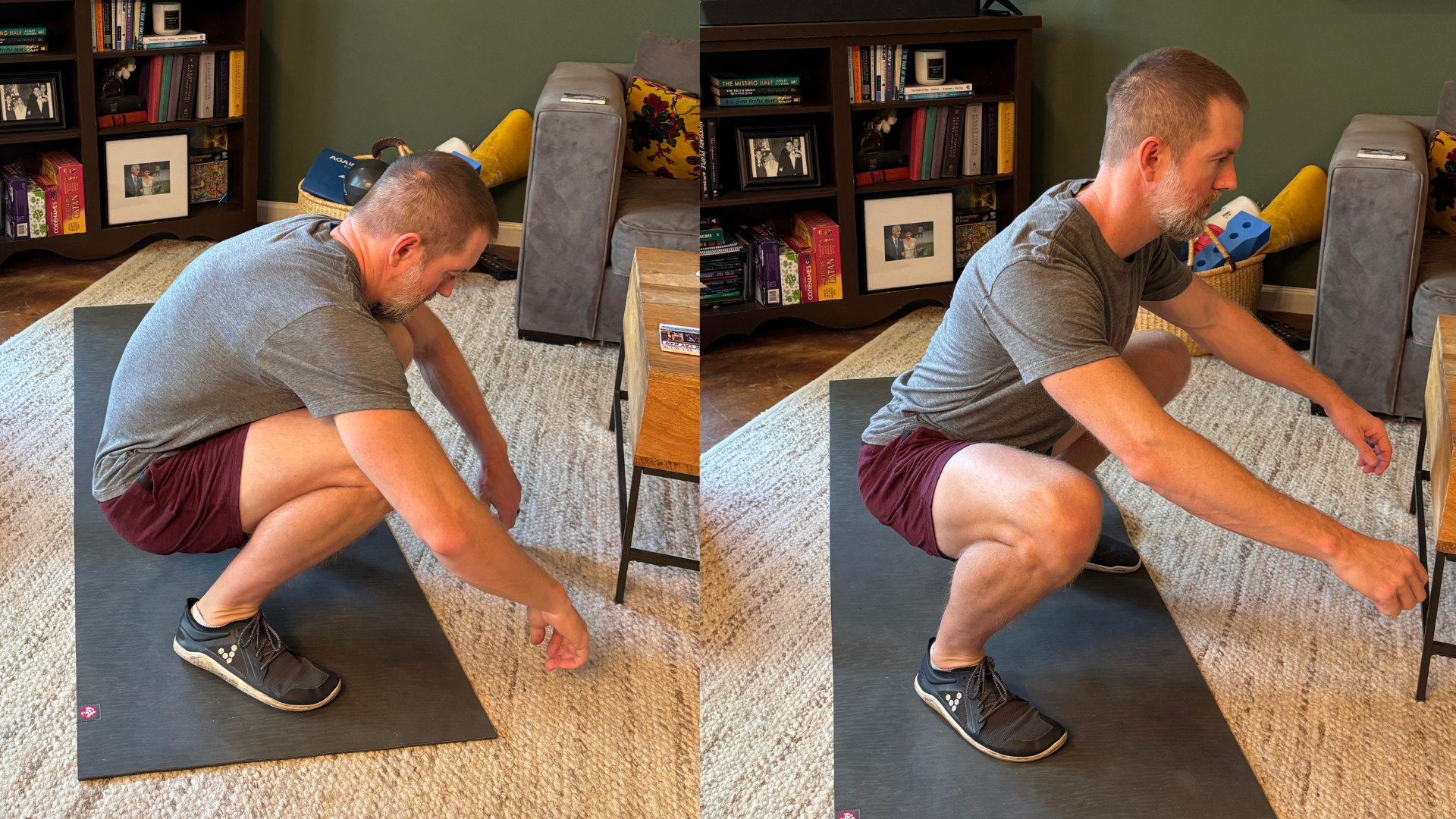Benefits of A Synched Circadian Rhythm
When the thousands of processes that your body is performing every second are synched together, incredible things happen. We have thousands of internal clocks that tell our brain, organs, and different cells what time of day it is and, therefore, what processes to put in place, what genes to turn on and off, what hormones to release, how your gut microbiome handle the food you eat, etc. at any given time. Having our circadian rhythm synched with our wake and sleep cycle has incredible health, fitness, and longevity benefits and these cycles are so important that animals and people actually get sick with disease, develop mood disorders, and gain weight when their circadian rhythm is off. Our daily circadian rhythm is a positive feedback loop: The more awake, active, exposed to sunlight, etc. we are during the day, the more sleep pressure builds helping us achieve better quality of sleep. The better quality of sleep we get, the more awake, active, etc. we will be during the day and so on. We prioritize our circadian rhythm at such a high level that every MovementLink protocol - sleep, nutrition, exercise, heat/cold stress, walks, breathing, etc. has a circadian timing element that we try and take advantage of.
There are many things that contribute to the time of day that our brain and cells think it is, but the three major contributors are our exposure to light, temperature, and when we eat. Because living with artificial lights, inside temperature controlled, insulated buildings are advances of the very recent past relative to our evolutionary history, our bodies and their processes have evolved over millions of years having been more exposed to the elements. At night, it would get darker and cooler and then it would get warmer and lighter during the day. With food not being as abundant and harder to prepare, eating occurred within smaller eating windows during the daytime. These have been key indicators of time of day that our bodies still use to regulate it’s self. With constant exposure to lights and screens, working sedentary jobs, air conditioning, and most people’s all-day eating schedule, it’s not a surprise that many Americans are struggling with a consistent circadian rhythm being a major contributor to 70% of Americans being overweight and 50% of Americans having a chronic disease. It’s been shown that simply getting people’s circadian rhythms back in synch has major health benefits.
This is a deep topic, so in this article we are going to focus on tips and timing of habits that we use to synch our circadian rhythm and we will link to articles for deeper dives into specifics. We’ll lay out the MovementLink Circadian Rhythm Protocols, some tips on how to implement them, and point you to some experts who discuss the topic in more detail.
The MovementLink Circadian Rhythm Protocols are broken into two sections: 1) Being Maximally Awake and 2) Being Maximally Asleep. These two processes have a highly correlated relationship with the the level of wakefulness highly impacting the sleep you’re able to achieve and the sleep your able to achieve highly impacting your level of wakefulness.
The MovementLink Circadian Rhythm Protocols to be Maximally Awake
We Wake-up Naturally (using an alarm clock only as a back-up)
Alarms wake us in the middle of sleep cycles and start our day with extra stress. Ideally, we have a sleep routine that allows us a full night of uninterrupted sleep. If there is something we need to wake up for, we’ll set an alarm so we don’t miss it. Life is not perfect, so we don’t expect to never have to use our alarm, but we try and avoid waking up to an alarm consistently.
We expose ourselves to bright lights as soon as we can. This is as simple as turning on the lights in whatever rooms we are in and exposing ourselves to sunlight whenever possible.
We perform at least 10 minutes of functional yoga and targeted mobility exercises each morning.
We don’t wear sunglasses before ~3 pm, unless it is very sunny and we are going to be outside for a prolonged period of time. Eye damage is something we want to avoid, so our exposure to sunlight is strategic.
We raise the temperature of our home/office during the day, differing from nighttime when we will lower it a bit.
We follow a 6-8 hour, Time-Restricted Eating Window that starts at least 1 hour after waking and ends at least two hours before bedtime.
We wait at least 1 hour before consuming any caffeine. Caffeine binds to adenosine receptors which makes us less tired…good right? Yes and no. Adenosine helps make us feel tired, which is a good thing at night, and it starts to burn off very quickly once we wake up in the morning. If we block adenosine receptors too early, the adenosine doesn’t burn off and lingers around until the caffeine wears off, which can cause us to feel tired in the middle of the day. By waiting at least an hour after waking for the majority of the adenosine to burn off naturally, when our caffeine burns off later, there’s not as much adenosine around to make us feel tired, therefore no energy crash.
Additional Caffeine Rules we implement:
No caffeine after noon. Like we said above, if we have caffeine too late, it can impact our sleep. Some people can still fall asleep with caffeine in their system, but cannot achieve deep sleep until the caffeine is metabolized. Alcohol is the same.
In addition to our 6-8 hour Time-Restricted Eating Window, we follow a maximum of a 12 hour caffeine to last meal rule. So, if we start drinking black coffee at 8 AM, our eating window needs to be finished before 8 PM.
If we are going to do a cold exposure, morning or around noon is best. If we're showering, this would be a good time for a cold shower. Naturally, or body’s core temperature rises during the day. While our body works to warm up during and after cold exposure, there is a net warming effect of our body’s core temperature which is line with our natural core body fluctuations.
We exercise in a way functional to your life 3-7 days per week and we get our heart rates up a bit every day.
The MovementLink Circadian Rhythm Protocols to be Maximally Asleep
Around 3 PM, when outside/driving, we start wearing sunglasses.
If we are going to do heat exposure, afternoon to evening is best. If we are going to shower or take a bath, hot is good. Naturally, or body’s core temperature drops at night. While our body works to cool down during and after heat exposure, there is a net cooling effect of our body’s core temperature which is line with our natural core body fluctuations.
With sunset,
we lower the temperature of our home/office.
we dim the lights in our home.
we wear blue light blocking glasses. It’s not just screens that expose us to blue light, it’s our normal light bulbs too! Lamps and reading lights and bathroom lights can expose you to blue light at the wrong times, but we can get special reading lights and lights for your bathroom to help with this.
We do mobility work with incorporated breathing exercises to unwind.
At least 1 hour before bedtime, we create a mental moat where we stop thinking deeply about our life and all the things we have to do.
We create a quality sleep environment:
We blackout our room and make sure it’s cool.
We use a sleep mask.
We love our pets, but we don’t sleep with pets in bed. Pets massively disrupt sleep quality.
We use a white noise sound machine.
Circadian Rhythm Tricks
There are times when you’ll need to be up late or go to bed early, or would just like to adjust quicker to a new time zone. All of our tips and tricks we use to synch our circadian rhythm can also be used to trick our brain and body into being awake/asleep at a different time too! Here’s an example: Each week, Coach Kyle gets to the gym for the early morning classes. His typical routine has him waking up naturally around 6-7 AM each morning, but he needs to wake up at 5 AM every now and then. Because his habits are built with circadian rhythm in mind, he is able to push up everything by an hour the day before his early wake-up time. When he eats his meals, when he stops his caffeine intake, when he works out, when he cools the temp of his home, when he puts on his sunglasses and his blue light blocking glasses, and when he lays down to go to bed, all gets shifted up by an hour. Most of the time, by doing this, he is able to fall asleep an hour earlier than usual allowing him a full nights sleep even with an earlier wake-up time. The next day, he just goes back to his normal timing.










